
Change and Continuity – How the West was Won

Introduction
Before the 1840s, everybody thought the American West was unfit to live in. Maps showed it as the ‘Great American Desert’.
But then, during the 1840s, Americans started to decide that they wanted to go there. First it was trappers and hunters. Then wagon trains began to pass through it, going to California or Oregon. Then, in succession, huge population movements took place – the Mormons, Gold Miners, Cowboys, Homesteaders – before, by 1900 at the latest, the 'Wild West' was no more.

This webpage looks at that story in overview.
After you have studied this webpage, answer the question sheet by clicking on the 'Time to Work' icon at the top of the page.
Links:
The following websites will help you research further:
• BBC Bitesize
• Description of the famous film
'How the West was Won'
• Simple overview video American West Exam Topic
• Good video Westward Expansion: Crash Course US History #24
1: The Mormons
In 1847 the Mormons – a religious group – moved to Salt Lake. They WANTED to get away from the terrible persecution they were suffering from the people back east. This early photograph shows Mormon Pioneer wagons in the Salt Lake Valley:
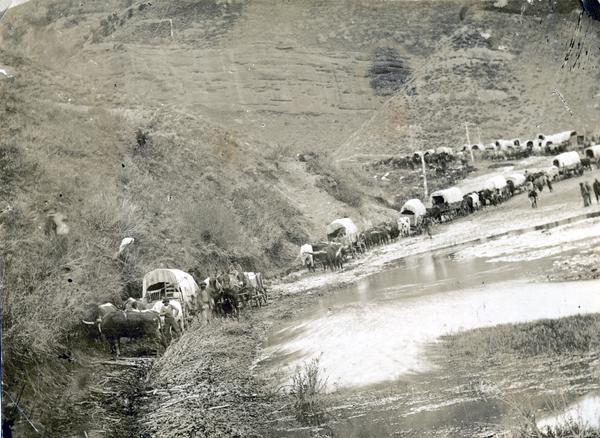
2: The Gold Miners
Then it was gold miners – gold was discovered in California in 1849, then in Colorado (1859), Arizona (1863) and Dakota (1874). The gold miners, of course, WANTED to get rich quick!
The gold miners were soon followed by store-owners and saloon-keepers. Wild mining towns grew up, such as Deadwood and Tombstone, with a reputation for lawlessness and violence. This photograph shows the Crystal Palace saloon, Tombstone, in about 1880:
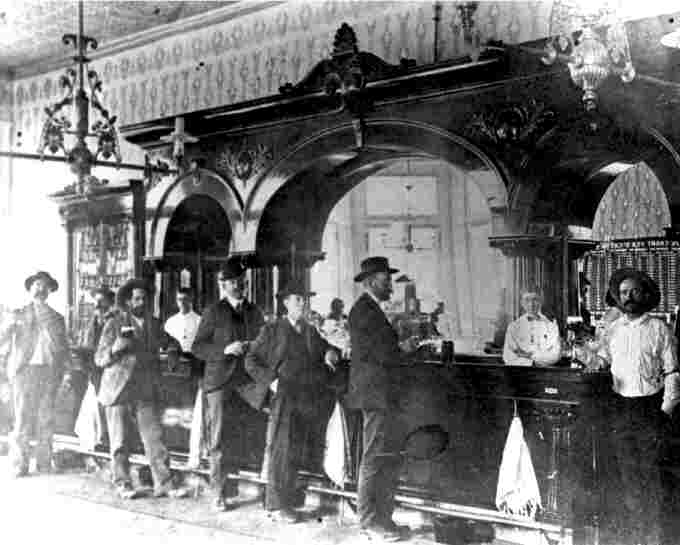
3: Cowboys and Cow-towns
After the American Civil War of 1861-65, cattle ranchers began to move onto the Great Plains. They WANTED large ranges of cheap land to graze their cattle. The law gave any man who owned a waterhole ‘range rights’ over the whole valley, so clever cattlemen like Jesse Chisholm were able to set up huge ranches.
‘Cattle towns’ such as Abilene (1867) and Dodge City (1875) soon grew up at the places where the railroads met the ranchers’ ‘cattle trails’. Huge herds of cattle went there, along with large numbers of cowboys, and it is from these places that many of the ‘cowboy’ stories of the Wild West come. Many of these stories are greatly exaggerated.
Charles M Russell’s 1909 painting shows thirsty cowboys riding their horses into the saloon – but this kind of scene probably never happened in real life:
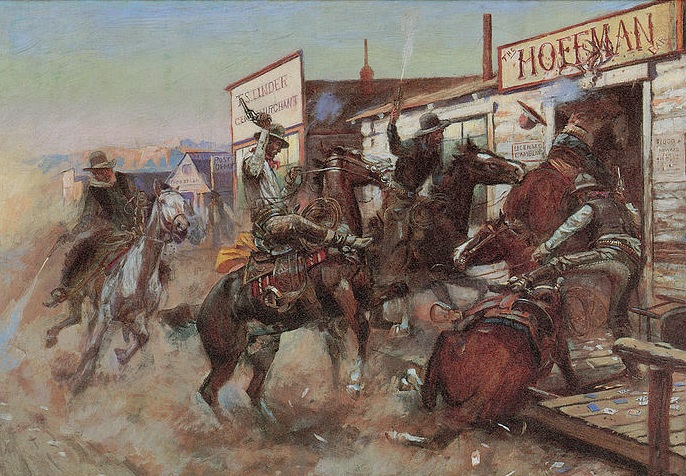
4: The Homesteaders
Back east, where land was expensive and many people were poor, a man called George Henry Evans said that the Great Plains should be free, and that a man should be able to win ownership of the land simply by working it. In 1862, the government passed the Homesteaders Act allowed settlers to claim 160 acres of free land if they lived on it and worked it.
Younger sons – who knew they would never inherit the family land – WANTED their own farms. The Homesteaders Act gave them the chance to get their own land at the cost of nothing but hard work.
‘Go West, young man, and grow up with the country!’ advised Horace Greeley, editor of the New York Tribune newspaper, in 1865. So many people did just that. They were called ‘homesteaders’.
After the American Civil War and the abolition of slavery, many of the first homesteaders in the American West were freed formely-enslaved black people, who WANTED a new life as well as free land. This 1870 photograph shows the homestead and family of Rpbert Anderson, a freed slave who settled in Nebraska.
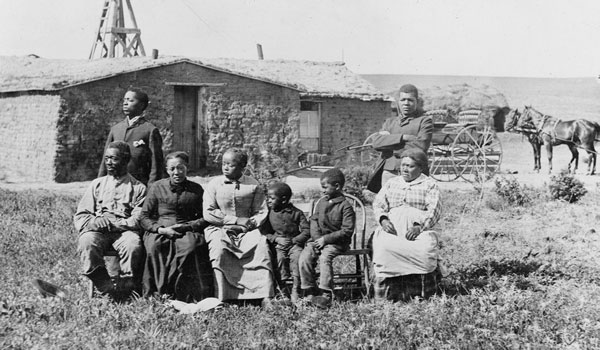
The American Civil War of 1861-65 had an effect on the Great Plains too. For four years, young men who would otherwise have stayed at home, instead joined the army and travelled around the country, living a life of great excitement and danger. After the war they could not settle down into their old life, and set off West. They WANTED adventure and the good life.
Some of them – such as the famous James Brothers – were mentally-damaged and violent, and ended up getting into a life of crime.
In 1869, the Union Pacific Railroad was finished, linking the east coast with the west coast across the Great Plains. The railroads encouraged ten of thousands of homesteaders, traders and workers to: ‘Go West!’
5: The End of the Wild West
The ‘frontier’ was the strip of land IN-BETWEEN the land that was already settled, and the open plains where nobody lived yet. It was the strip of land that was just being ‘opened-up’. So the ‘frontier’, of course, moved all the time – as fast as one area was settled and civilised, the strip of land next to it became the new ‘frontier’.
At first, the new settlers faced many hardships. They were likely to be lynched by cattle-ranchers or scalped by Indians. This 1887 drawing shows what the cartoonist thought life was like for the homesteaders. The hats of the gunmen read ‘Bushwacker’ and ‘Renegade’:
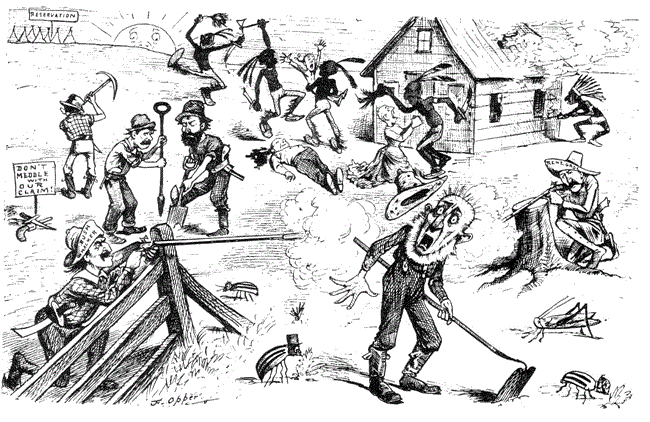
But things changed VERY quickly on the frontier. The US Army defeated the Indians and drove them onto reservations. Lawmen like Wyatt Earp made their living moving from one frontier town to the next, bringing law and order, then moving on to the next lawless town. The Wild West became a place of towns, churches, railroads, ranches, farms, ‘law and order’ and civilised society.
Some people date the end of the ‘wild west’ at 1890, when the US government declared that the ‘frontier’ no longer existed, since no area of the United States had less than 6 persons per square mile living in it. Others suggest 1902, when the outlaws Butch Cassidy and the Sundance Kid packed their bags and sailed to South America to get away, they said, from barbed wire and the Pinkerton National Detective Agency.